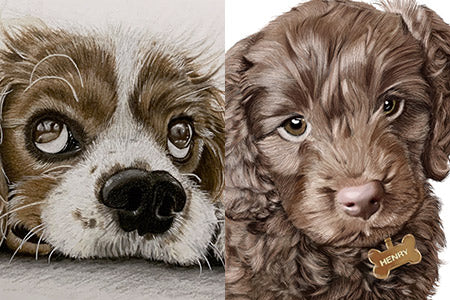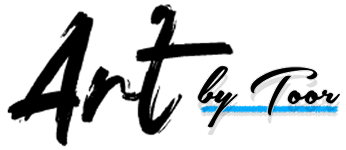
Traditional Art vs Digital Art
What is the difference between traditional and digital art?
Digital Art is created using technology and traditional art is any form of art that is created using real media such as pencils, paint, charcoal etc.
Traditional Art

Traditional Art: Drawn on Bristol Smooth using Faber-Castell Coloured Pencils.
Original Physical Artwork
Once the artwork is created it cannot be replicated and therefore is often considered as one of a kind and worth more than a print or digital file.
Imperfections
When creating art traditionally imperfections or mistakes can occur during the creative process, these imperfections need to be embraced and worked into the artwork which can give the piece a unique and authentic value.
Materials Used
The equipment and materials used can vary which can product various qualities and distinctions in the final product. For example the texture of the piece will vary depending on if paint strokes have been used versus marks using coloured pencil.
Expensive & Lengthy Process
Creating high quality artwork requires investment in art supplies that will ensure your art has longevity and won't discolour or fade after a few months. These supplies are expensive and depending on the size of the project you could use up a full tube of paint on just one piece of work.
It also can take several hours or days to finish a traditional piece. Setup and drying times need to be considered or the time of day (the change in light makes artwork look completely different).
Digital Art

Digital Art: Drawn on tablet using stylus.
Efficiency & Flexibility
Using technology means that you can work anywhere at anytime. Traditional artwork usually requires a lot of preparation and a decent studio/workspace before you can start to work on the final product. I like to work on a tablet, which means I can move from one room to another with minimal disruption to my process.
If any mistakes are made at all during the process you can hit the undo button. This makes producing artwork a lot quicker as you don't need to spend time figuring out how to work in the mistake you made.
More Exploration
Working digitally means you can work in layers and explore using different tools without any wastage. I can test out whether an art piece will work better using coloured pencils, watercolour or acrylics without wasting materials.
Limitless possibilities
Most digital art is scalable and can be printed onto almost anything. Artwork can be printed onto smart device cases, notebooks, pillows, blankets, mugs, wallpaper and many more. This is a great option for a gift as it gives the opportunity to create something truly unique and practical.
The only real limitation with digital art is that you are unable to see the depth of texture of using different mediums as you would with traditional pieces.
More affordable
Digital art only requires a one off cost that is cheaper in the long run. Once you have chosen your technology you don't have to worry about ever running out and buying more art supplies.
